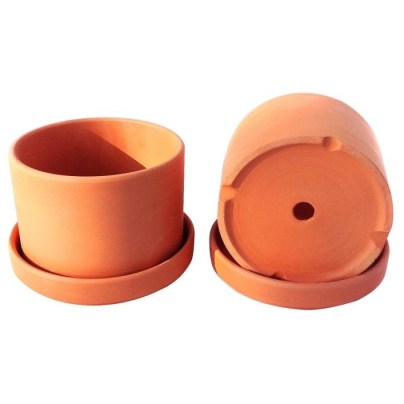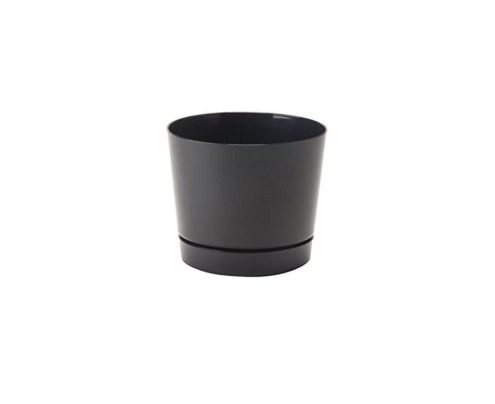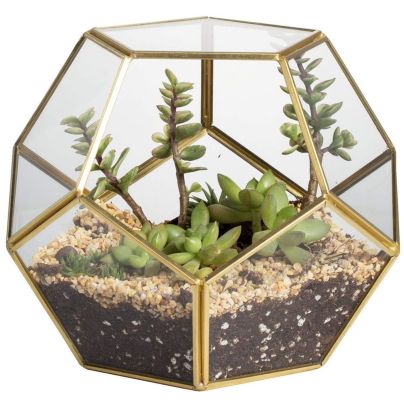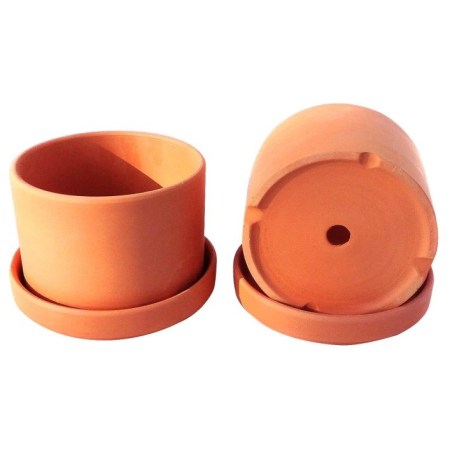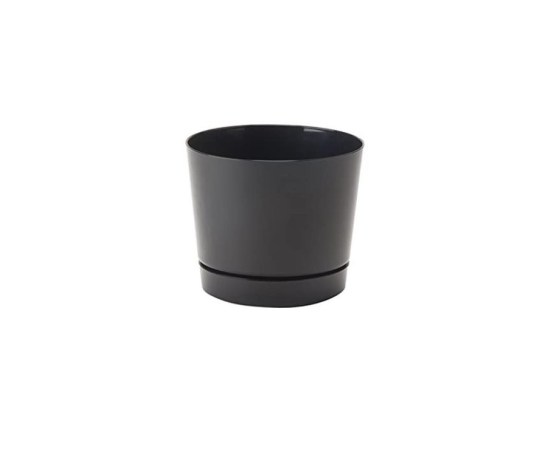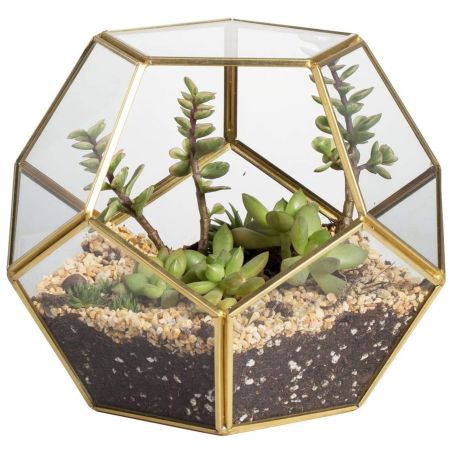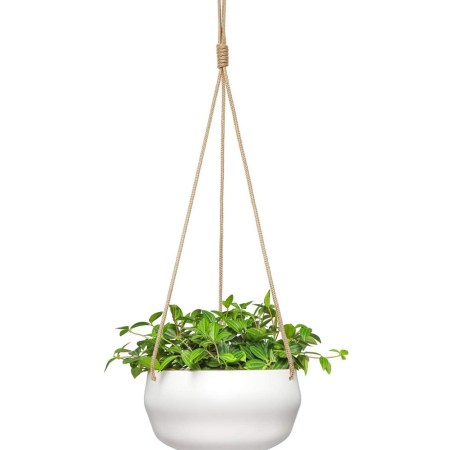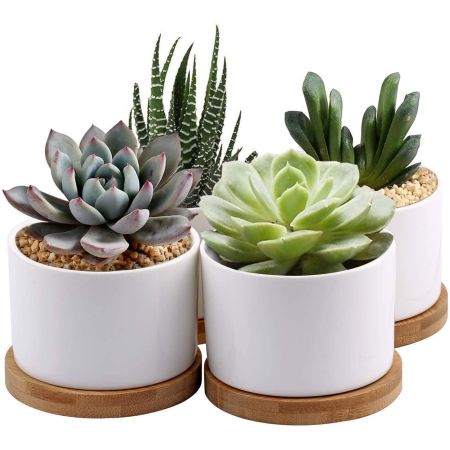We may earn revenue from the products available on this page and participate in affiliate programs. Learn More ›
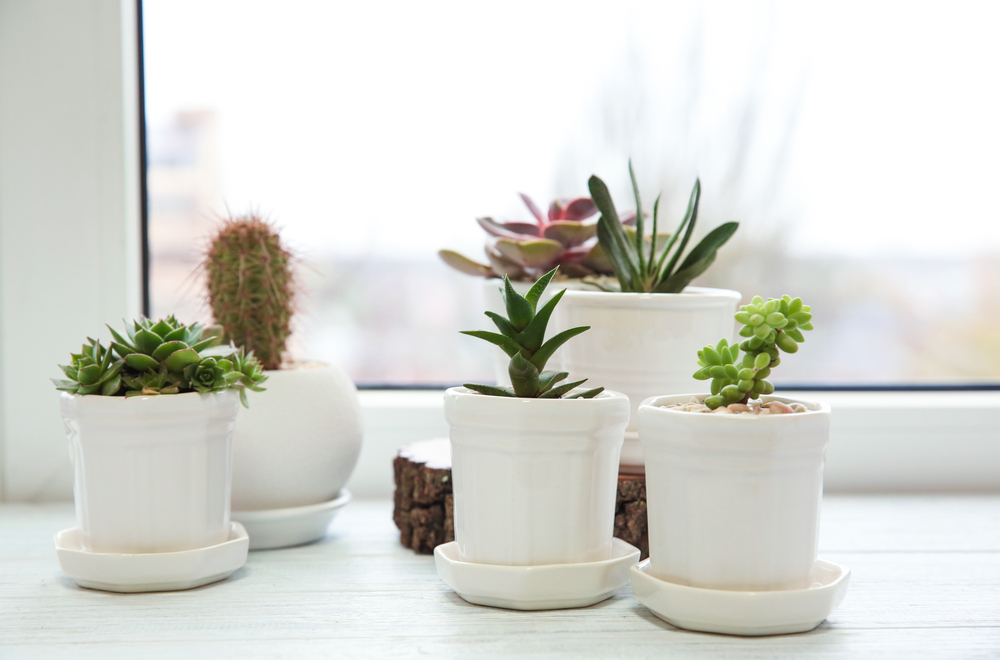
Succulents store water in their leaves, making them drought-friendly and low-maintenance houseplants for those who work odd hours, frequently travel, or have little interest in fussing. You can still bring home a colorful cactus or a vibrant Crown of Thorns only to find the plants change color, get mushy, and die. Although it’s true that succulents are generally easy plants to maintain, they certainly need some care.
To keep your succulents healthy and growing, start with choosing the right pot for each individual plant. That doesn’t just mean a pot that adds visual interest to your home, though you likely want that, too. The best pots for succulents must have proper drainage and just enough space for the plants to grow. When you take the time to choose the correct planter using these shopping tips and recommendations, your succulents can lead long, fruitful lives.
- BEST OVERALL: Goodman and Wife Terracotta Planters
- BEST BUDGET: Novelty Full Depth Cylinder Pot
- BEST TERRARIUM: NCYP Gold Glass Geometric Terrarium
- BEST HANGING PLANTER: Mkono Ceramic Hanging Planter
- BEST FOR DESKTOPS: ZOUTOG Succulent Planter
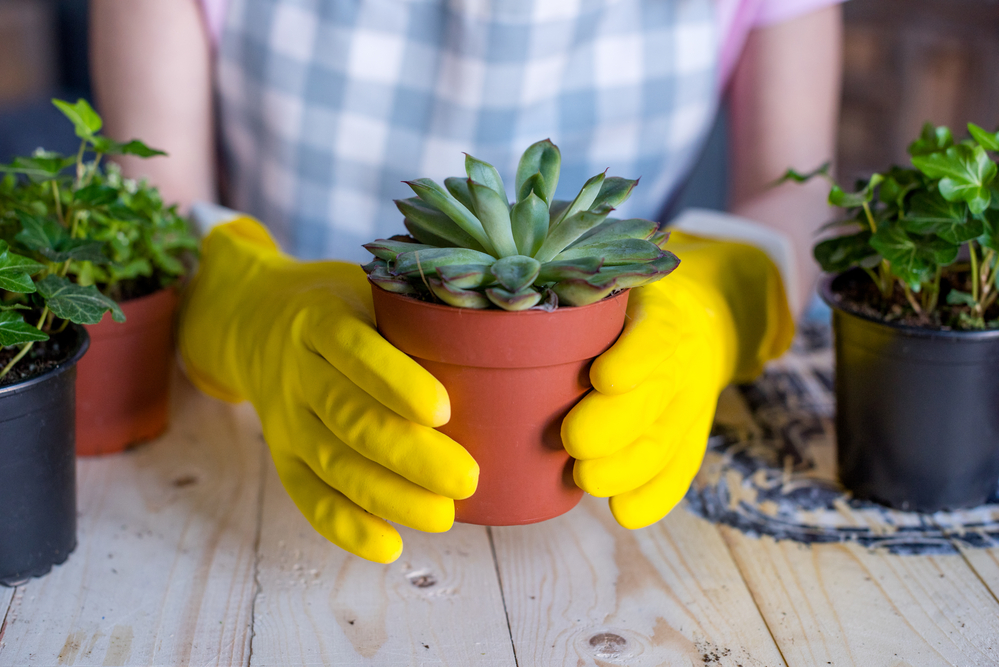
What to Consider When Choosing the Best Pots for Succulents
So how do you choose a proper pot that keeps your succulents alive, blooming, and propagating? Find out below.
Size
Select a pot large enough to allow the plant to grow, but be sure it’s not oversized. The right size pot has a circumference that’s about 5 to 10 percent larger than the size of the plant. Select pots that allow no more than an inch or two of extra room around the sides. If the pot is too large, the fragile roots will spread before the plant has time to grow. A pot that is too small will leave no place for the roots to spread.
Style
The ideal pot will match your decor and taste, but it should also match the plant’s physical characteristics. Succulents with upright growing styles, such as aloe, look nice in tall pots. Low-growing varieties, such as Echeveria, look great in short pots. And let’s not forget the spillers like String of Pearls, which have trailing growth habits. Spillers in hanging planters or shallow pots look great and thrive.
Material
Pots are available in a multitude of materials. The most common are plastic, terracotta, ceramic, metal, resin, and wood. The best pots for succulents are made from terracotta or ceramic. Both of these materials are breathable, which encourages proper water drainage and air circulation. Just remember that both terracotta and ceramic are heavy, especially once you add soil and plants.
For larger plants, especially those that you will move around, choose pots made from resin or plastic. Those lighter pots will save your back as you reposition plants or move them from one room to another.
Drainage
If you need to know anything before you plant and grow succulents, it’s that they do not like a lot of water. This comes into play even before you establish a watering routine. If a pot does not have proper drainage, excess water may pool at the bottom with nowhere to go and put your succulent at risk of root rot.
No matter the design, planters with drainage holes in the bottom are the best pots for succulents. Many succulent planters don’t have drainage holes, and it’s entirely possible to use any of them for succulents as long as you can remember to water sparingly and monitor often.
Our Top Picks
The picks featured below provide an optimal growing environment for various succulent species, ranging from classic terracotta pots to ceramic hanging planters.
Best Overall
Goodman and Wife Terracotta Planters
See ItFor succulents, it’s tough to go wrong with unglazed terracotta pots. The material is permeable, allowing air and water to pass through the walls of the pot. Unglazed terracotta dries out quickly, which means you need to water more often—but you’re also less likely to overwater.
This set of pots from Goodman and Wife have a seamless style that will blend in with almost any decor. Their sleek design is not easily found at big-box retailers. Each pot measures 3.25 inches tall by 4.5 inches wide and is paired with a saucer to catch excess water.
Pros
- Stylish, neutral design
- Terracotta discourages overwatering
- Two pots in one package
- Includes matching saucers
Cons
- Porous material requires more frequent watering
Best Budget
Novelty Full Depth Cylinder Pot
See ItNovelty has pioneered the creation of affordable, sustainable, and attractive lawn and garden products. These plastic cylinder pots are constructed with type-5 recyclable polypropylene. They have a glossy finish and are lightweight and sleek. The pots are available in several sizes starting at 6 inches. Their depth makes them work best for tall succulent varieties.
The pots are paired with built-in trays to protect decks, patios, or indoor surfaces from water, which makes them a perfect alternative to heavy, expensive, and fragile ceramic pots. Although plastic isn’t as breathable as terracotta or ceramic, these planters allow adequate drainage. However, keep an eye on the built-in tray to ensure there’s no standing water.
Pros
- Affordable option for small houseplants
- Good depth for taller succulents
- Made of recycled plastic
- Includes built-in tray
Cons
- Not ideal for outdoor use
- Tray does not separate from pot and may collect water
Best Terrarium
NCYP Gold Glass Geometric Terrarium
See ItThis minute pentagon-shaped terrarium is ideal for small air plants and succulents. The geometric glass vessel has gold metal accents but is also available in black or silver metal trim. Its open face can be turned to point either up or to one side, so you can play around with the look.
This unique planter makes for a cute decorative accent when placed on a desk or side table. Note that the terrarium is not watertight, so plan to incorporate some type of absorbent material, such as moss, into the soil to prevent leaks.
Pros
- Modern geometric design
- Can be pointed up or to the side for different looks
- Three metallic finishes available
Cons
- Glass may shatter or crack
- Not watertight
Best Hanging Planter
Mkono Ceramic Hanging Planter
See ItThere are a host of succulent plants that spill or trail, so you likely want planters that showcase their length. The Mkono planter is designed for String of Pearls, Donkey Tail, and other trailing plants, but works equally well with non-trailing plants, too.
The pot is made from premium ceramic and has a matte finish. The durable polyester rope is lightweight and adjustable, so you can shorten or lengthen it as needed. Each pot has a drainage hole, so water doesn’t accumulate, and a detachable rubber plug that keeps dirt inside.
Pros
- Sturdy ceramic build
- Comes with an adjustable hanging rope
- Includes drainage hole with detachable rubber plug
Cons
- Material is breakable
Best for Desktops
ZOUTOG Succulent Planter
See ItThe ZOUTOG set of four succulent pots comes with bamboo trays, allowing for an easy and eye-catching display. The miniature planters work great individually or as a neat plant grouping on a windowsill or shelf. These ceramic pots have a smooth finish for a clean, modern look. Each contains a built-in drainage hole that prevents overwatering and root rot.
Pros
- Set of four mini planters
- Strong ceramic build
- Drainage hole included
Cons
- Material is breakable
Our Verdict
The Goodman and Wife terracotta planters offer excellent drainage and prevent overwatering, offering just enough style to make your succulents stand out. Small succulents tend to look best in groupings of a few, especially with the stylish package of four ZOUTOG ceramic planters for your desk, windowsill, or bookshelf.
How We Chose the Best Pots for Succulents
Growing succulents is easy and rewarding, and choosing the best pots for your succulents increases the chance of success. This starts with proper drainage, a must for making sure the soil around the succulent dries out between waterings.
You have to catch that water, too, so an included saucer or tray helps. The pot’s material also can contribute to succulent health, and terra cotta or ceramic pots help the roots breathe and the soil dry. Plastic or resin comes in handy when growing big succulents to cut down on weight.
It’s best to select a size only slightly larger than the nursery pot your succulent comes in, so this list includes some small pots for cute little rosettes and medium choices for larger succulents. Finally, design enhances the look of these prized plants. For example, a trailing succulent like String of Pearls shines best in a hanging pot.
FAQs
Succulents come in many shapes, colors, textures, and sizes, but you can use the same basic care methods for most varieties.
Q. What type of soil is best for succulents?
Succulents grow best in porous, sandy soil. For optimal results, purchase a potting soil mix specially formulated for cacti and succulents.
Q. How do you care for succulents?
Succulents generally do best with a combination of direct and indirect sunlight. Although they are drought-tolerant plants, that doesn’t mean they only thrive in desert-like conditions. Monitor their direct sun exposure to avoid burning the foliage but also remember they don’t tolerate cold outside weather.
Q. How do you water succulents?
Most people overwater houseplants, which leads to root rot and dead plants. The best way to avoid that is not to pour frequent small amounts of water on them. Instead, wait until the soil is dry and then soak them until water drains from the bottom of the pot. Don’t forget to empty water out of the saucers beneath the plants, as well.
Why Trust Bob Vila
Bob Vila has been America’s Handyman since 1979. As the host of beloved and groundbreaking TV series, including This Old House and Bob Vila’s Home Again, he popularized and became synonymous with “do it yourself” home improvement.
Over the course of his decades-long career, Bob Vila has helped millions of people build, renovate, repair, and live better each day—a tradition that continues today in the expert yet accessible home advice at the heart of BobVila.com. Today, the Bob Vila editorial team distills need-to-know information into project tutorials, maintenance guides, tool 101s, and more. These home and garden experts then thoroughly research, vet, and recommend products that support homeowners, renters, DIYers, and professionals in their to-do lists.
Debbie Wolfe is an author and freelance writer in a variety of niches. She specializes in home, garden, DIY, and lifestyle topics. Debbie has written for leading online media outlets and online retailers, including HGTV, The Home Depot, Walmart, Family Handyman, Realtor, and more. Her book, Do-It-Yourself Garden Projects and Crafts, from Skyhorse Publishing, features a variety of practical DIY projects to beautify your garden and home. Debbie holds a degree in Creative Writing and Earth Science from Northland College. When not writing, Debbie spends her time reading, gardening, cooking, and keeping up with her active family in the deep South.
